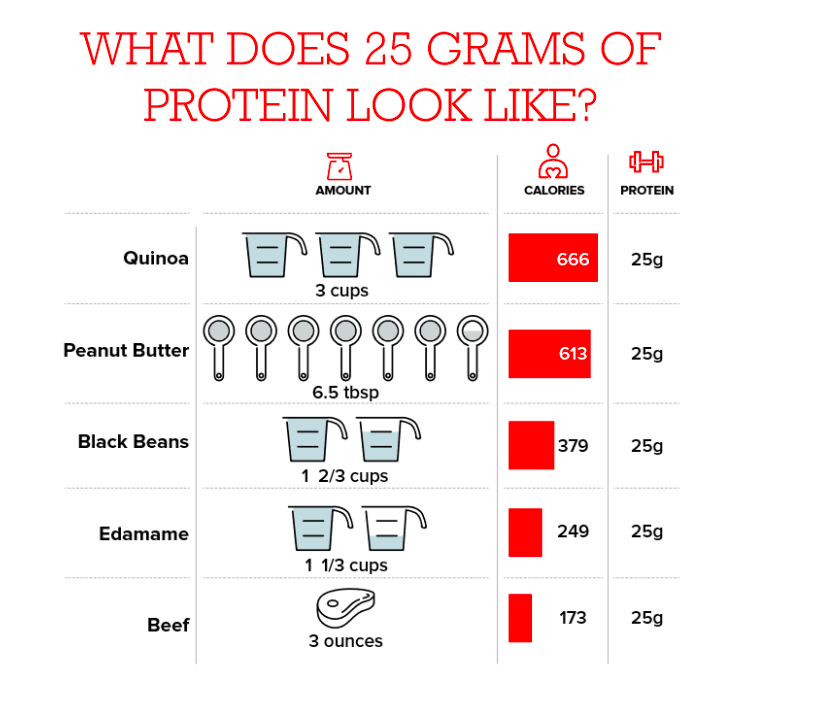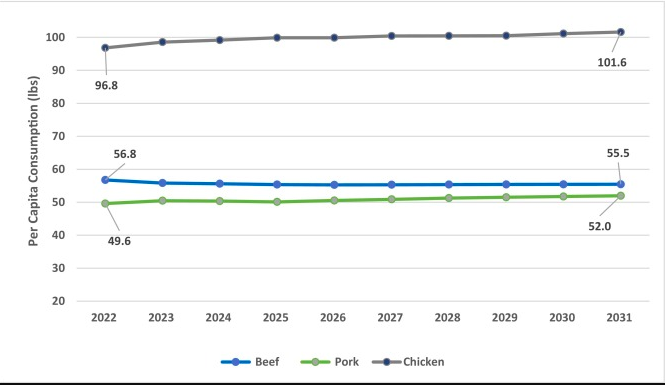Good News: Millennials Still Love to Eat Meat

Memorial Day weekend is known as the unofficial kickoff to grilling season. Even with the push to more plant-based proteins, beef, pork and chicken are still in high demand, even as inflation draws concerns about a possible drop in domestic demand.
Glynn Tonsor, an economist with Kansas State University, along with Purdue University’s Jayson Lusk, recently released a report called “Meat Demand Outdoes Meat Avoidance." The economists found even with the push to plant-based foods, U.S. consumers have a growing hunger for meat.
“Three-fourths of the U.S. public is still what I’d call a regular meat consumer,” says Tonsor. “That's where our domestic, robust meat demand is coming from. The remaining one-fourth is either a flexitarian or vegan or vegetarian.”
For the meat eaters who may not be familiar with the latest vegan/vegetarian terms, here’s a breakdown of what each one means:
-
Flexitarian: a person who has a primarily vegetarian diet but occasionally eats meat or fish.
-
Vegetarian: a person who doesn’t eat meat, poultry, fish or seafood.
-
Vegan: A strict vegetarian who avoids all meats and animal foods, including insects, eggs and honey, and usually avoids using any animal-based products such as leather.
While there is ongoing buzz about more people opting for less meat, the data tells a different story. Tonsor and Lusk found in 2021 Americans wanted to consume 31% more beef, 24% more pork and 40% more chicken than they did two decades prior.

“It's not surprising we have that diversity,” says Tonsor. “You can have strong, national meat demand and also have a growing number that are looking for something different. And I think that's exactly what we've got going on.”
And one of the largest groups of meat eaters? Millennials.
“If you were to read the headlines, they talk about millennials as the group that is the most open to alternative proteins and other things. And that's probably true, but they're also the group that eats meat at the highest rate of any category or generation,” says Jack Bobo, Director of Global Food and Water Policy for the Nature Conservancy. “Those two things can be true at the same time. They're open to all alternatives, and they like the products that are available."
Bobo says the biggest mistake is telling consumers want they shouldn’t eat. Instead, he suggests the meat industry take a different approach.
“If you tell somebody to not eat hamburgers, they're going to go eat a double quarter pounder just to stick it to you,” says Bobo. “I think it hurts when people attack the sector. But instead of responding in terms of 'well don't eat plant-based meat,' talk about 'well, you know, here's the reason why you should feel good about what you're doing.'”
Income is a factor for consumers. While steak and other proteins are seen as luxury items by some families, Tonsor and Lusk’s research found younger respondents with college degrees or incomes over $100,000, and those residing in the West, are most likely to indicate being vegan or vegetarian and may represent “meat avoidance.”
Other results from the study include:
-
64.2% of those with a household income above $100,000 are predicted to declare as regular consumers of animal products.
-
74.2% of those with household incomes of $100,000 or less are unlikely to declare they are regular consumers of animal products.
-
12.2% of those with a household income above $100,000 are predicted to declare as vegan or vegetarian versus 4.5% of those with household incomes of $100,000 or less.
Win Shoppers Over with Protein
For those shoppers still buying meat from their local grocer, how can the meat industry continue to win them over? Midan Marketing’s Danette Amstein says it’s simple: tout protein.
“Get it on the front of the package, make it stand out, make it pop,” says Amstein.

The National Beef Checkoff produced this visual to show why meat is your best source of protein. Data shows in order to get the same amount of protein from a 3 oz. steak, you’d need to eat 6.5 tablespoons of peanut butter or 3 cups of quinoa.
“Protein is hot. Unfortunately, folks in the middle of the store are doing a better job in many cases of showcasing that than we are in the meat case,” says Amstein.

USDA’s forecast for meat consumption indicates Americans will continue to demand meat products. Projections made in October 2021 for the next decade show a nearly 6-pound increase in per-capital meat consumption, with a 5-pound increase in chicken consumption, 1-pound decline in beef consumption, and 2-pound increase in pork consumption.







